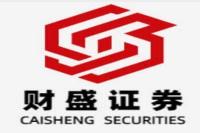China-EU EV Anti-Subsidy Dispute: Navigating the Choppy Waters of Trade Negotiations
Meta Description: Deep dive into the ongoing China-EU electric vehicle (EV) anti-subsidy dispute, exploring the latest developments, potential impacts on global trade, and the future of EV market dynamics. Analysis includes expert insights, real-world examples, and a comprehensive FAQ section. Keywords: China, EU, Electric Vehicles, Anti-Subsidy, Trade Dispute, Price Commitment, Negotiation, Global Trade, EV Market, Automotive Industry.
The recent announcement from China's Ministry of Commerce (MOFCOM) regarding the ongoing price commitment negotiations with the European Union (EU) on electric vehicle (EV) anti-subsidy allegations has sent ripples through the global automotive industry. It's not just another trade spat; it's a high-stakes game of chess impacting billions of dollars, thousands of jobs, and the very future of sustainable transportation. This isn't just about tariffs and trade regulations – it's a clash of economic philosophies, a battle for market share, and a reflection of the ever-shifting geopolitical landscape. The stakes are incredibly high, and the potential repercussions could be felt far beyond the immediate players. Think about it: the outcome will shape not only the EV landscape in Europe and China, but also influence investment decisions, technological innovation, and consumer choices worldwide. This isn't some dry, academic discussion; this is a story about the future, about innovation, and about the very real impact of global trade policies on our daily lives. We'll unpack the complexities of this case, shedding light on the underlying issues, analyzing the strategic maneuvers of both sides, and predicting the potential outcomes. This comprehensive analysis will equip you with the knowledge to understand the nuances of this crucial trade dispute and its implications for the global economy. Buckle up, because this is going to be a wild ride!
China-EU EV Anti-Subsidy Dispute: A Deep Dive
The recent statement by MOFCOM spokesperson He Yongqian underscores the increasing tension surrounding the EU's investigation into alleged subsidies provided to Chinese EV manufacturers. While MOFCOM has consistently advocated for dialogue and negotiation, the lack of tangible progress from the EU side has understandably caused concern. This isn't simply a bureaucratic hurdle; it's a crucial juncture that will significantly shape the global EV market. Let's break down the key aspects:
The EU's Perspective: The EU's argument centers on the claim that Chinese EV manufacturers receive unfair government subsidies, giving them an unfair competitive advantage in the European market. They argue this undermines the level playing field principle of fair trade, potentially harming European EV manufacturers. This isn't about protectionism, they claim; it's about ensuring fair competition.
China's Counterarguments: China, on the other hand, vehemently denies these accusations, arguing that its support for the EV industry is aimed at promoting domestic technological advancement and achieving climate goals – a perfectly legitimate pursuit. They view the EU's investigation as protectionist, hindering the global transition to sustainable transportation.
The Price Commitment Negotiations: The current focus is on price commitment negotiations – a process where China would agree to certain pricing adjustments to address the EU's concerns. Essentially, it's a compromise aimed at avoiding punitive tariffs, but finding a mutually acceptable solution proves incredibly challenging. This delicate dance requires both parties to navigate their respective political and economic interests. It's like negotiating a peace treaty, only with far less bloodshed (hopefully).
Impact on Global Trade: The outcome of this dispute will set a significant precedent for future trade relations, particularly in the rapidly expanding EV sector. A resolution could potentially encourage more investment in this critical area, while a prolonged standoff could lead to trade wars and hinder the global transition to electric mobility. It's a high-stakes gamble, and the world is watching.
Why This Matters: The implications extend far beyond just EV manufacturers. It affects consumers who could face higher prices or reduced choice, investors considering their portfolios, and governments striving to achieve climate goals. The ripple effect is massive, potentially influencing supply chains, innovation, and the broader geopolitical landscape. It's a crucial moment that will define the future of the automotive industry and possibly even global trade itself.
The Role of Subsidies in the EV Industry
The use of subsidies in the EV industry is a hotly debated topic. Proponents argue that government support is essential to accelerate technological innovation and overcome the high initial costs associated with EV development and manufacturing. Think of it as a jumpstart for a nascent technology with significant long-term benefits. However, critics argue that subsidies can distort market competition, leading to unfair practices and hindering the efficient allocation of resources. It's a classic case of balancing the need for intervention with the potential for market distortion – a tightrope walk for policymakers worldwide.
This debate is further complicated by the differing approaches taken by various governments. Some countries prioritize direct financial incentives, while others focus on indirect support through tax breaks or regulatory frameworks. The lack of standardization adds another layer of complexity to the already intricate global trade landscape.
| Country | Subsidy Approach | Impact on EV Market |
|--------------|--------------------------------------|--------------------------------------------------------|
| China | Direct financial incentives, tax breaks | Significant growth in domestic EV manufacturing |
| United States | Tax credits, purchase incentives | Growing EV market, but still faces challenges |
| European Union | Varies by country, increasing focus on incentives | Diverse development, with some countries leading the way |
Navigating the Future of EV Trade
The China-EU EV anti-subsidy dispute highlights the growing complexities of global trade in the context of technological innovation and climate change. It underscores the need for a more nuanced and collaborative approach to trade policy, one that recognizes the importance of both fair competition and the pursuit of sustainable development. Finding this balance requires international cooperation and a commitment to addressing the challenges through dialogue and negotiation, rather than resorting to protectionist measures.
The future of the EV industry will depend, in large part, on the ability of countries to find common ground on issues like subsidies, intellectual property rights, and standards. It requires a shift in mindset, moving from zero-sum games to win-win scenarios.
Frequently Asked Questions (FAQ)
-
Q: What is the potential impact on European consumers? A: If the EU imposes tariffs on Chinese EVs, it could lead to higher prices for consumers or a reduction in the availability of certain models.
-
Q: How might this affect the global climate goals? A: A protracted dispute could slow down the global transition to electric vehicles, hindering efforts to reduce greenhouse gas emissions.
-
Q: Are there any alternative solutions to tariffs? A: Yes, exploring alternative dispute resolution mechanisms, such as mediation or arbitration, could offer a more constructive path to resolving the issue.
-
Q: What role does technology play in this dispute? A: The rapid pace of technological advancement in the EV sector complicates matters, as the definition of "subsidy" becomes increasingly blurred.
-
Q: How could this affect investments in the EV industry? A: Uncertainty caused by the dispute could deter investment in both Chinese and European EV companies, potentially slowing down innovation.
-
Q: What is the likely outcome of the negotiations? A: Predicting the outcome is difficult, but a negotiated settlement that addresses the EU's concerns while avoiding excessive trade restrictions remains a possibility.
Conclusion:
The China-EU EV anti-subsidy dispute is far more than just a trade disagreement. It's a microcosm of the larger conversations surrounding global trade, technological innovation, and the imperative to transition towards a sustainable future. The outcome will significantly shape the global EV market and offer valuable lessons for future trade negotiations in high-growth, strategically important sectors. While the road ahead remains uncertain, the commitment to dialogue and finding a mutually beneficial solution remains critical for all stakeholders involved. This intricate scenario calls for a nuanced understanding of the complexities and a commitment to fostering collaborative solutions for a more sustainable and prosperous future for the global automotive industry.



